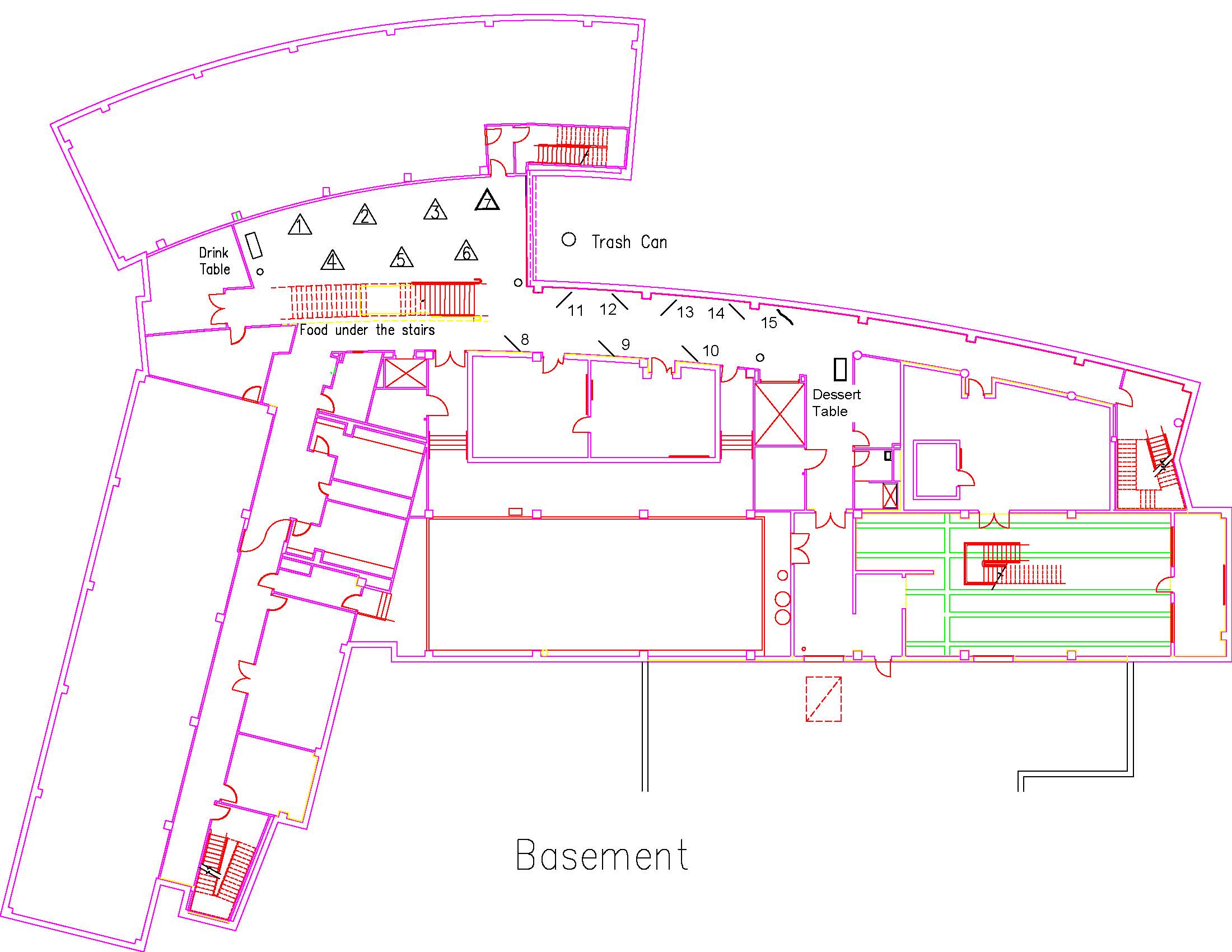PHYS2019CAMPBELL56087 PHYS
Graphene Quantum Dots as Imaging, Sensing, and Delivery Agents
Type: Graduate
Author(s):
Elizabeth Campbell
Physics & Astronomy
Giridhar Akkaraju
Biology
Roberto Gonzalez-Rodriguez
Chemistry & Biochemistry
Md. Tanvir Hasan
Physics & Astronomy
Advisor(s):
Anton Naumov
Physics & Astronomy
Location: Session: 2; Basement; Table Number: 10

View PresentationGraphene quantum dots (GQDs) are novel materials with a number of unique properties that can be applied in electronics, sensing and biotechnology. GQDs possess physical properties that are critical for biomedical applications, including small size (3-5 nm), high quantum yield, and pH-dependent fluorescence emission in the visible/near-infrared, providing a possibility of molecular imaging, and pH-sensing. They also show very low cytotoxicity suggesting high potential for multiple biomedical applications. GQDs can also be doped to form nitrogen doped graphene quantum dots (N-GQDs), sulfur doped graphene quantum dots (NS-GQDs) and boron nitrogen doped graphene quantum dots (BN-GQDs), which allow these optical properties to be adjusted. We utilize and modify these properties to yield a multifunctional delivery/imaging/sensing platform geared toward the analysis of cancer therapeutics delivery in vitro. In our work, we outline how GQDs can serve as potential drug transport agents and as molecular markers for imaging the delivery pathways. Optimal emission and excitation are selected for each quantum dot to minimize the autofluorescence of cells, allowing them to be imaged in vitro. Emission in healthy (HEK-293) and cancer (HeLa and MCF-7) cells is quantified for a variety of pH environments to identify the ideal conditions for cellular internalization and pH-sensing of acidic cancerous environments. In addition, in vitro fluorescence microscopy analysis provides quantitative assessment for accumulation in cells. The results of this work suggest GQDs as innovative and effective highly biocompatible multifunctional platforms for cancer therapeutics.
PHYS2019CERESA50306 PHYS
How to deal with inner filter effect in fluorescence experiments
Type: Graduate
Author(s):
Luca Ceresa
Physics & Astronomy
Jose Chavez
Physics & Astronomy
Ignacy Gryczynski
Physics & Astronomy
Joe Kimball
Physics & Astronomy
Advisor(s):
Zygmunt Gryczynski
Physics & Astronomy
Location: Session: 1; 2nd Floor; Table Number: 2

View PresentationFluorescence is a very useful and popular technique which has been used in a wide variety of fields and, of late most importantly, at the intersection of biophysics, biochemistry and medicine. Despite being relatively simple from a theoretical point of view, it turns out that practical applications can have trivial problems that can cause significant spectroscopic problems. Specifically, an often overlooked yet fundamental obstacle in fluorescence spectroscopy is the nonlinearity of fluorescence intensity versus fluorophore absorption. This is referred to as the inner-filter effect. In literature, it is divided into a “primary inner-filter effect” and a “secondary inner-filter effect”. The former is caused by the absorption of the excitation light, which results in the lowering of the intensity of light reaching deeper regions of the solution. The latter is represented by the reabsorption of the emitted fluorescence by the fluorophores in the solution. Due to the fact that the primary inner filter effect is a direct consequence of the high concentration of the solution, to observe the secondary inner filter effect it is necessary to have a chromophore which absorbs part of the light that is emitted by the main fluorophore. Although working with low concentrations is generally recognized as a good practice to avoid artifacts related to inner filter effects, the primary inner filter effect can occur even at low absorbances (< 0.05). Furthermore, it is possible that using solutions with high absorbance is strictly necessary in studying the photophysical properties of fluorescent dyes and the interactions of biological macromolecules. Therefore, a reliable correction method for inner filter effects is fundamental for spectroscopic studies. Since it has been reported that the existing methods for correcting the fluorescence intensity are hard to implement in practice, we propose a strategy based on the previous calculation of the so called “sensitivity factor” of a spectrofluorometer. By mounting a cuvette on a movable holder in a square geometry setup, we can modify the position of the cuvette during a regular emission/excitation experiment. This allows us to determine the sensitivity factor. This result can be effectively used to correct the emission/excitation spectra to restore the linearity between absorbance and fluorescence intensity in samples characterized by high concentrations.
PHYS2019CHAVEZ34578 PHYS
Phosphorescence – Potential Biological Applications of Direct Excitation to the Triplet State.
Type: Graduate
Author(s):
Jose Chavez
Physics & Astronomy
Luca Ceresa
Physics & Astronomy
Ignacy Gryczynski
Physics & Astronomy
Joe Kimball
Physics & Astronomy
Advisor(s):
Zygmunt Gryczynski
Physics & Astronomy
Location: Session: 2; 3rd Floor; Table Number: 2

View PresentationFluorescence has grown to be the most sensitive detection technique used in a variety of biophysical, biochemical and medical applications for several decades. However, there is an interesting luminescence similar to fluorescence which causes an “afterglow effect” (“glow in the dark”). This is called “phosphorescence”. Phosphorescence has an exceptionally longer lifetime (milli or microseconds) compared to fluorescence (nanoseconds). This can be up to a million times longer. Modern fluorescence lifetime measurements require sensitive detectors that cost several ten to hundreds of thousands of dollars, while a phosphorescence lifetime detector can be in the thousands range. This detector uses ocean optics spectrometry with a phosphoroscope to measure phosphorescence. With this application we want to use it for studying protein dynamics such as shape, spacing, binding, etc. The novelty for this approach is using tryptophan as a probe for direct excitation to the phosphorescence triplet state. This means the usual encounter of fluorescence there is a continuous light source. When exposed the sample will emit its fluorescence. Once removed from the light source, since fluorescence is so fast when decaying, will expire off. However, with phosphorescence, after the removal of the light source, the sample still emits. This procedure if successful will circumvent fluorescence and just achieve phosphorescence. To study this we will be using PVA (poly vinyl alcohol [plastic]) with 5,6 – Benzoquinoline, Indole, and Tryptophan where the first compound is confirmed to have phosphorescence able to be seen even with the naked eye at room temperature. These will be studied in a device that will measure phosphorescence called a fluorospectrometer (Varian Eclipse) and the phosphoroscope. With this information we can find out what color (wavelength) to excite the tryptophan and circumvent fluorescence to phosphorescence.
PHYS2019CIAMPA28285 PHYS
Massive Winds Triggered by Supernovae in the Large Magellanic Cloud Galaxy
Type: Graduate
Author(s):
Drew Ciampa
Physics & Astronomy
Advisor(s):
Kat Barger
Physics & Astronomy
Location: Session: 1; Basement; Table Number: 6

View PresentationMassive amounts of gaseous material are being ejected from the nearby Large Magellanic Cloud (LMC) due to supernovae explosions occurring inside the galaxy. These explosions influence how gas cycles in and out of a galaxy and is crucial for our understanding of how galaxies evolve. Being the nearest gas-rich galaxy, the LMC provides us with an excellent opportunity to explore this gas cycle in detail. We have combined spectroscopically resolved observations to investigate the influence supernovae have on the LMC gas and the connection between supernovae explosions and the currently flowing galactic wind.
PHYS2019DONOR55459 PHYS
Old Problems Require Modern Solutions: a Data-Driven Approach to Modeling Stellar Populations
Type: Graduate
Author(s):
John Donor
Physics & Astronomy
John Wise
Physics & Astronomy
Advisor(s):
Peter Frinchaboy
Physics & Astronomy
Location: Session: 2; Basement; Table Number: 7

View PresentationThe problem of fitting isochrones, theoretical models of stellar populations, to the observed stellar populations (e.g. star clusters) has plagued observational astronomy for decades. A plethora of algorithms have been developed, but many fall short of their goals, and almost all are very computationally expensive. We present a new, computationally efficient technique made possible by first creating a fiducial representation of the data. This concise representation allows for a robust comparison to many theoretical models using a Markov-Chain Monte Carlo (MCMC) approach, quickly producing not only accurate fits but reasonable constraints on the final fitting parameters. The technique is applied to a number of star clusters, and the results are discussed in the context of Galactic chemical evolution.